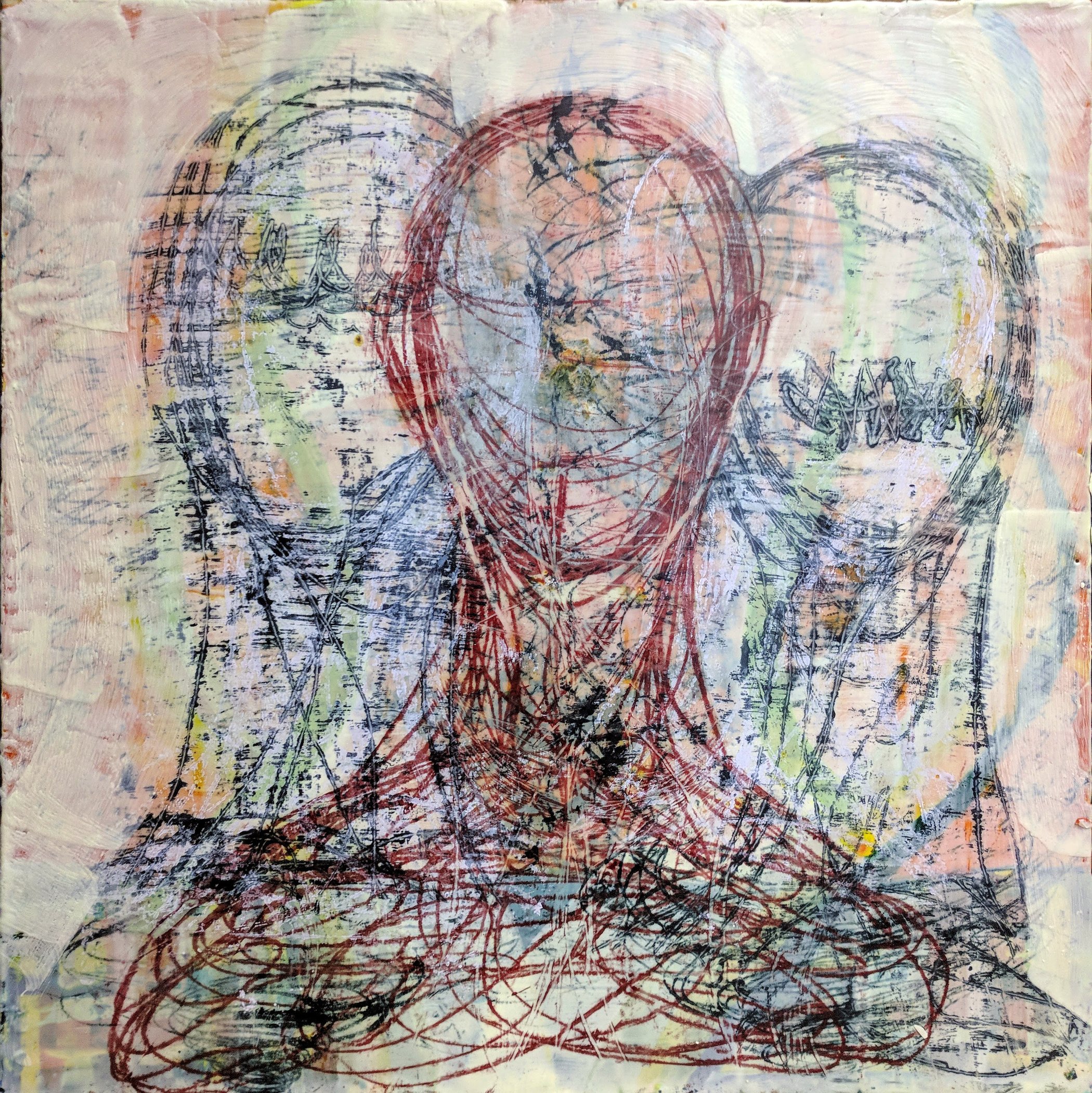R&F Pigment Stick® Techniques: Trace Monotype
Trace Monotype an experimental form of printmaking combining all the expressive qualities of drawing and painting with the unique qualities of working and composing from a plate. R&F Pigment Sticks® are uniquely suited to this process. They have more tack than tube oil but also offer a more open working time than many standard printmaking inks, with a wider range of colors. You'll only need a few items to try this process: a brayer, a barren (optional) , a plate, newsprint, tissue paper, tape, a mark-making tool, and mineral oil for clean-up.
We checked in with artist Kelly Anne McGrath to learn about some of the basics of the Trace Monotype process. A technique Kelly utilizes in her artwork and demonstrates in workshops.
Use a brayer to roll a thin even layer of R&F Pigment Stick® color onto a printing plate. Next, lightly place a piece of paper over the ink, taping the top and bottom to your work table. Begin making marks by tracing the back of the paper with a mark making tool (the pressure transfers the ink). The residual image on the plate can also be printed creating a positive and negative image (see image above). While this is a monotype process and produces a unique image at each iteration, you can also make a series with repeated imagery in a way that adds unique expression to each piece. A variety of tools and textured surfaces are recommended to explore the variety of possible marks. Printing plates can be made from any smooth nonabsorbent material. Multiple prints can also be pulled from the same plate. The subsequent images will be lighter and less saturated; these are often called ghost prints.


